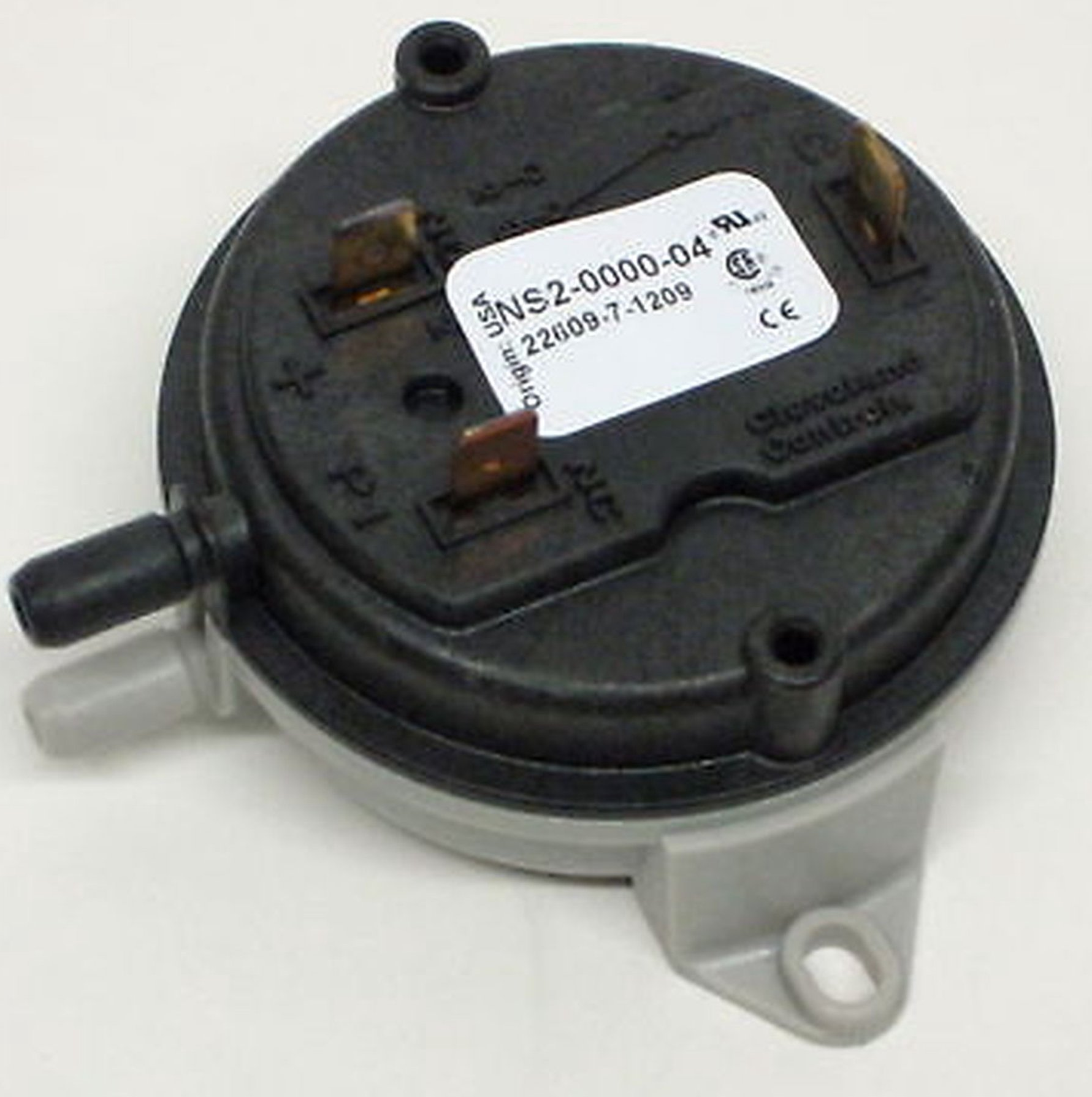
How Does An Expansion Valve Work (Explained)
Let’s dive deep into expansion valves and their crucial role in home air conditioning systems. We will discuss the workings of expansion valves, their importance, and the potential consequences of refrigerant flooding. Additionally, we will examine the location of the expansion valve within an AC system and assess whether it can function without one. Join us as we delve into the fascinating world of AC expansion valves and their contribution to keeping your living spaces cool and comfortable.
What Is An Expansion Valve For AC
An expansion valve, also known as a thermostatic expansion valve or TXV, is a vital component in an air conditioning (AC) system. Its primary function is to regulate the refrigerant flow within the system, ensuring the optimal balance between cooling efficiency and energy consumption. By controlling the refrigerant flow, the expansion valve maintains the appropriate temperature and pressure levels within the AC system, ultimately contributing to a comfortable and consistent indoor environment.
The expansion valve is designed to respond to temperature and pressure changes in the evaporator coil, which is part of the AC system responsible for absorbing heat from the indoor air. As warm air passes over the evaporator coil, the refrigerant absorbs the heat, causing the refrigerant to evaporate and change from a low-pressure liquid to a low-pressure gas. This process removes heat from the air, leaving it cooler and more comfortable for occupants.
The expansion valve's role in this process is to meter the refrigerant entering the evaporator coil. Doing so ensures that the coil operates at its most efficient point, preventing issues such as refrigerant flooding or starvation. If too much refrigerant enters the coil, it can lead to flooding, which negatively impacts efficiency and may cause damage to the compressor. On the other hand, if too little refrigerant is allowed to enter the coil, the system cannot cool the space effectively.
Where Is The Expansion Valve Located In The Home AC System
In a home air conditioning system, the expansion valve is typically between the condenser and the evaporator. The condenser is the outdoor unit responsible for releasing heat into the atmosphere, while the evaporator, usually found inside the air handler, absorbs heat from the indoor air.
The expansion valve plays a crucial role in regulating refrigerant flow as it transitions from the high-pressure side of the system (the condenser) to the low-pressure side (the evaporator). By controlling the refrigerant flow, the expansion valve ensures efficient cooling and prevents potential issues, such as refrigerant flooding. The expansion valve is a key component strategically positioned within the home AC system to maintain optimal performance and efficiency.
How Does An AC Expansion Valve Work
The expansion valve is a critical component in your home air conditioning system that regulates refrigerant flow, allowing for efficient cooling and optimal performance.
To fully understand how an AC expansion valve works, let's break down the basics of the refrigeration cycle and the role of this essential component.
The Refrigeration Cycle and Expansion Valve
The refrigeration cycle in a home AC system consists of four main components: the compressor, the condenser, the expansion valve, and the evaporator. These components work together continuously to absorb heat from your indoor environment and release it outdoors, effectively cooling your living spaces.
The cycle begins with the compressor pressuring the refrigerant, raising its temperature. The high-pressure, high-temperature refrigerant then moves through the condenser, which releases heat to the outdoor environment, causing the refrigerant to condense into a high-pressure liquid. This liquid refrigerant then enters the expansion valve.
The expansion valve plays a crucial role in the refrigeration cycle, as it regulates the flow of liquid refrigerant into the evaporator. By controlling the amount of refrigerant entering the evaporator, the expansion valve ensures that the refrigerant is vaporized at the right rate, enabling efficient heat absorption from your indoor air. The cooled, low-pressure refrigerant then returns to the compressor, and the cycle repeats.
Importance of Proper Refrigerant Flow
Proper refrigerant flow through the expansion valve is essential for optimal AC system performance. If the valve allows too much refrigerant to enter the evaporator, a condition known as "refrigerant flooding" occurs. This can lead to many negative effects, including reduced cooling efficiency, increased energy consumption, and potential damage to the compressor due to liquid refrigerant slugging.
Can Air Conditioners Work Without an Expansion Valve?
Technically, an AC system could function without an expansion valve. However, it would be highly inefficient and potentially harmful to the system components. The expansion valve's controlling refrigerant flow is crucial for efficient cooling and maintaining the system's overall performance.
The expansion valve is integral to your home air conditioning system. It plays a vital role in regulating refrigerant flow, enabling efficient cooling, and protecting the system from potential damage. Understanding how an AC expansion valve works can help you appreciate the complexity of your HVAC system and the importance of regular maintenance to ensure optimal performance and longevity.
What Does An Expansion Valve Do?
The expansion valve’s primary function is to regulate the refrigerant flow within the system, ensuring efficient cooling and temperature control throughout your living spaces. Let's delve deeper into the role of expansion valves and how they contribute to your AC system's overall performance.
The Role of Expansion Valves in an Air Conditioning System
An air conditioning system operates through a closed-loop refrigeration cycle that involves several processes, including compression, condensation, expansion, and evaporation. The expansion valve comes into play during the expansion phase, a critical step in determining the system's cooling efficiency.
To understand the expansion valve's role, we first need to comprehend the basics of the refrigeration cycle:
- Compression: The compressor pumps the refrigerant vapor, raising its pressure and temperature. This high-pressure, high-temperature vapor then moves toward the condenser.
- Condensation: The hot refrigerant vapor releases heat to the outdoor environment through the condenser coils, transforming it into a high-pressure liquid.
- Expansion: The high-pressure liquid refrigerant flows through the expansion valve, which regulates its flow rate and reduces the pressure, causing the refrigerant to expand and cool down significantly.
- Evaporation: The low-pressure, cold refrigerant absorbs heat from the indoor air as it flows through the evaporator coils. It then evaporates and becomes a low-pressure vapor, which returns to the compressor, and the cycle repeats.
As you can see, the expansion valve plays a vital role in this cycle, ensuring the refrigerant's pressure and flow rate are appropriate for efficient cooling.
Types of Expansion Valves
Two main types of expansion valves are used in residential air conditioning systems: the thermostatic expansion valve (TXV) and the capillary tube.
- Thermostatic Expansion Valve (TXV): The TXV is more sophisticated and precise. It utilizes a temperature-sensing bulb filled with refrigerant attached to the evaporator's outlet. The bulb senses the temperature of the refrigerant leaving the evaporator and adjusts the valve's opening accordingly. This allows for precise refrigerant flow rate control, ensuring optimal system performance and energy efficiency.
- Capillary Tube: The capillary tube is simpler and less expensive than the TXV. It consists of a long, narrow tube with a fixed diameter, which creates a pressure drop as the refrigerant flows through it. While capillary tubes are less precise than TXVs, they're still effective in regulating refrigerant flow in smaller AC systems.
Why Expansion Valves Matter
Proper refrigerant management is crucial for efficiently operating an air conditioning system. An expansion valve that functions correctly will:
- Maintain the ideal balance of pressure and temperature for the refrigerant
- Optimize the AC system's cooling capacity and energy efficiency
- Reduce the risk of refrigerant flooding
In contrast, a malfunctioning expansion valve can lead to several issues, such as inefficient cooling, higher energy consumption, and even system breakdowns.
The expansion valve is a key player in your home's air conditioning system. Its primary function is to regulate the flow and pressure of the refrigerant, enabling the system to work efficiently and maintain a comfortable indoor environment. Whether it's a thermostatic expansion valve or a capillary tube, understanding how these components work is essential for homeowners seeking to keep their living spaces cool and energy-efficient.
Negative Effects Of Refrigerant Flooding
Refrigerant flooding is an issue that can occur in air conditioning systems when excess liquid refrigerant enters the compressor, which is designed to handle only gaseous refrigerant. Various factors, such as an oversized expansion valve, a faulty expansion valve, an incorrect refrigerant charge, or other system malfunctions, can cause this. Refrigerant flooding can lead to a range of negative effects on your AC system's performance and lifespan.
- Reduced efficiency: Refrigerant flooding can cause a decrease in the overall efficiency of your air conditioning system. When too much liquid refrigerant enters the compressor, it can lead to a drop in cooling capacity as the compressor struggles to process the excessive refrigerant. This, in turn, will cause the system to work harder, consuming more energy and driving up your electricity bills.
- Compressor damage: As the compressor is designed to handle gaseous refrigerant, liquid refrigerant can cause significant stress on its components. This can lead to mechanical damage, such as broken valves, damaged piston rings, and worn bearings. Over time, this damage can result in the eventual failure of the compressor, which is often an expensive component to replace.
- Increased wear and tear: The presence of liquid refrigerant in the compressor can also cause increased wear and tear on other parts of the AC system, such as the evaporator and condenser coils. This can lead to premature failure of these components and higher maintenance costs.
- Oil dilution: When liquid refrigerant mixes with the compressor's lubricating oil, it can dilute the oil and reduce its ability to lubricate the compressor's moving parts properly. This can lead to increased friction, overheating, and accelerated wear on the compressor.
- Decreased lifespan: The combination of reduced efficiency, increased wear and tear, and potential damage to the compressor and other components can significantly decrease the overall lifespan of your air conditioning system. This could result in more frequent repairs and replacements, leading to higher costs in the long run.
To prevent refrigerant flooding and its negative effects, a qualified HVAC technician must
ensure your air conditioning system is properly maintained and serviced. Regular checkups, accurate refrigerant charging, and the proper functioning of the expansion valve are essential for the efficient operation and longevity of your AC system.
How Much Does It Cost To Fix an AC Expansion Valve?
The cost of fixing or replacing an AC expansion valve can vary depending on several factors, such as the make and model of your system, the complexity of the installation, and the labor charges in your area. On average, you can expect to pay anywhere from $250 to $600 for the parts and labor involved in replacing an AC expansion valve.
Remember that these figures are only a general estimate, and the actual cost might differ based on your situation. To get an accurate quote for your AC expansion valve repair or replacement,
contact our experienced professionals at All-Star HVAC. We'll happily assess your system and provide a detailed estimate tailored to your needs.
We hope you've found this exploration of expansion valves informative and helpful.
At All-Star HVAC, we are dedicated to providing our customers with the knowledge and expertise required to make informed decisions about their home comfort systems. If you have any questions or concerns or need assistance with your AC system, don't hesitate to contact our team of skilled professionals. Stay cool and comfortable, and happy cooling!


Payment Options








